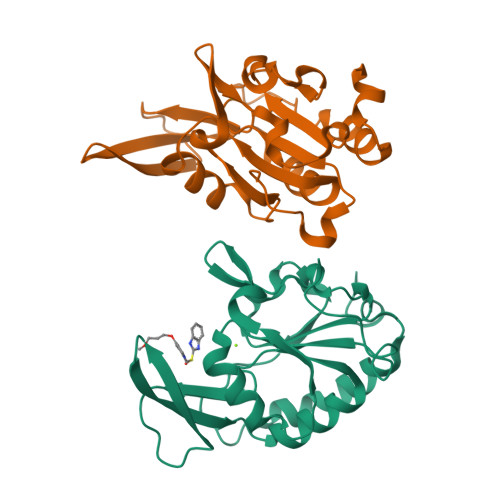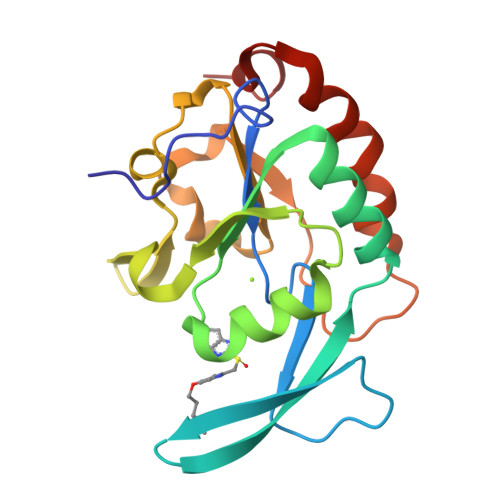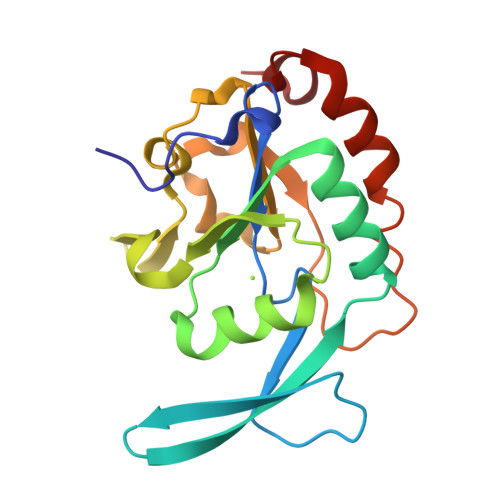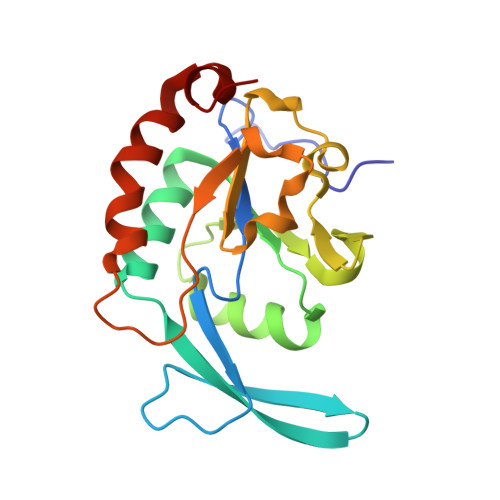Selective inactivation of a human neuronal silencing phosphatase by a small molecule inhibitor.
Zhang, M., Cho, E.J., Burstein, G., Siegel, D., Zhang, Y.(2011) ACS Chem Biol 6: 511-519
- PubMed: 21348431
- DOI: https://doi.org/10.1021/cb100357t
- Primary Citation of Related Structures:
3PGL - PubMed Abstract:
The unstructured C-terminal domain (CTD) of eukaryotic RNA polymerase II dynamically regulates the process of transcription by recruiting different factors to nascent mRNA through its multiple phosphorylation patterns. A newly discovered class of phosphatases, the human small C-terminal domain phosphatases (Scp's), specifically dephosphorylates phosphorylated Ser(5) (phospho.Ser5) of the tandem heptad repeats of the CTD of RNA polymerase II. Scp's also function as transcription regulators that epigenetically silence the expression of specific neuronal genes, whose inactivation leads to neuronal stem cell differentiation. Small molecule inhibitors of Scp's will be valuable for elucidating their mechanism in nervous system development and can possibly offer new strategies to treat diseases related to neurodegeneration. Despite the difficulty in developing selective inhibitors of protein phosphatases, we have recognized a characteristic hydrophobic binding pocket adjacent to the active site in Scp's that may facilitate selective inhibition. In the present study, we successfully identified the first selective lead compound, rabeprazole, for the Scp/TFIIF-interacting CTD phosphatase (Fcp) family. The high-resolution crystal structure of rabeprazole-bound Scp1 showed that the compound indeed binds to the hydrophobic binding pocket. We further confirmed that rabeprazole only targets Scp's but not its close family members Fcp1 and Dullard or bacteriophage λ Ser/Thr phosphatase. Such specificity may prove important for In Vivo studies since accidental inhibition of Fcp1 or Dullard would result in cell malfunctions and even cell death.
Organizational Affiliation:
Department of Chemistry and Biochemistry, University of Texas at Austin, Austin, Texas 78712, USA.



















